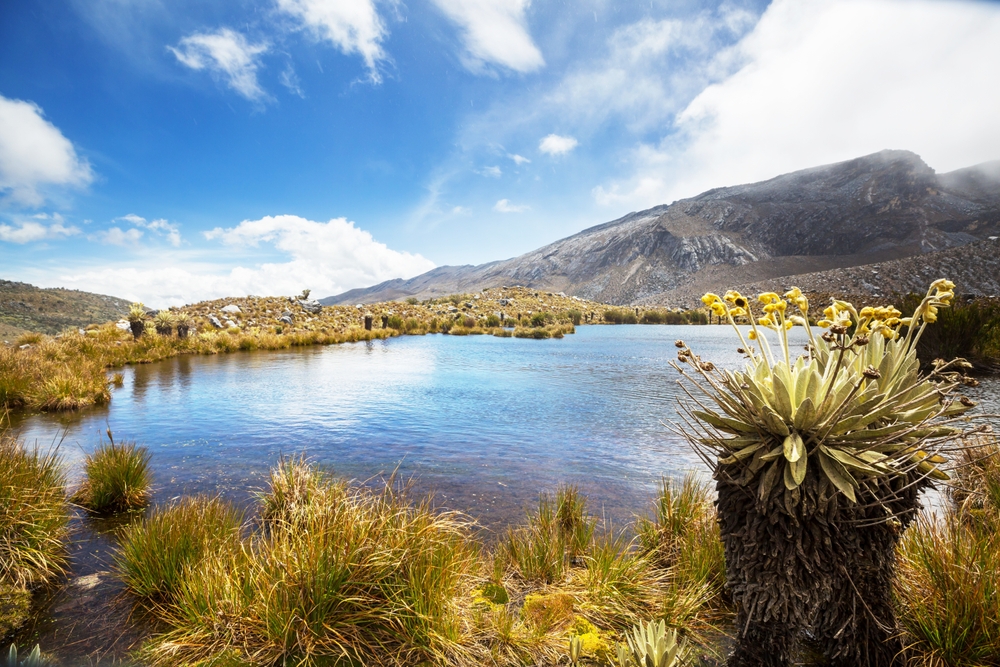El Tamá Overview
El Tamá National Park, or Parque Nacional El Tamá, is a protected area spanning approximately 1,390 square miles (3,600 square kilometers) in the Andes Mountains of western Venezuela. The park stretches across the states of Táchira and Apure, near the border with Colombia.
This remote and biodiverse landscape is known for its rugged mountains, cloud forests, and deep valleys, offering a dramatic backdrop of natural beauty. The park’s elevation ranges from about 1,640 feet (500 meters) to over 11,480 feet (3,500 meters), creating a variety of ecosystems that support diverse plant and animal life.
The park is also part of the Tama-Pisba Conservation Corridor, which connects Venezuela and Colombia through an important ecological network.
The terrain of El Tamá is characterized by steep mountain slopes, lush cloud forests, and high-altitude páramo ecosystems. Towering peaks, such as Cerro El Cobre, dominate the landscape, while deep ravines and fast-flowing rivers carve through the valleys below.
Waterfalls cascade down the mountainsides, creating picturesque scenes amidst the dense vegetation. The park’s forests are rich with ferns, mosses, bromeliads, and orchids, thriving in the humid environment. The páramo, found at the highest elevations, consists of frailejón plants, grasses, and shrubs, which have adapted to the cold and windy conditions.
The wildlife in El Tamá National Park is diverse, reflecting its range of habitats. Visitors might encounter spectacled bears, South America’s only bear species, roaming the dense forests in search of fruit. Other notable mammals include jaguars, pumas, ocelots, and tapirs, which navigate the rugged terrain with stealth and agility. Small deer, anteaters, and armadillos can also be found foraging in the undergrowth.
The birdlife is particularly remarkable, with over 500 species recorded within the park, making it a paradise for birdwatchers. The vibrant Andean cock-of-the-rock, the military macaw, and various species of toucans and tanagers add brilliant splashes of color to the green canopy. High-altitude species, such as the Andean condor and black-and-chestnut eagle, soar over the peaks.
El Tamá’s isolation has helped preserve its natural wonders, but some areas of the park are accessible for ecotourism. Hiking and birdwatching are among the most popular activities, as the park offers numerous trails that wind through its diverse landscapes. Adventurous visitors can explore cloud forests, cross hanging bridges, and discover hidden waterfalls deep in the jungle.
The rivers and streams provide opportunities for nature photography and wildlife observation, while those reaching the páramo are rewarded with breathtaking panoramic views. Local indigenous communities also offer cultural experiences, allowing visitors to learn about traditional ways of life and conservation efforts.
Despite its ecological significance, El Tamá National Park faces conservation challenges. Illegal logging, agricultural expansion, and poaching threaten its delicate ecosystems. However, conservation efforts led by Venezuelan authorities and environmental organizations aim to protect the park’s biodiversity.
Cross-border initiatives with Colombia seek to strengthen the park’s ecological corridor and enhance wildlife conservation. Successes include reforestation projects, increased monitoring of key species, and community engagement programs that promote sustainable practices. The park remains a crucial refuge for endangered species, offering a glimpse into one of the most pristine and untouched regions of the northern Andes.















































































